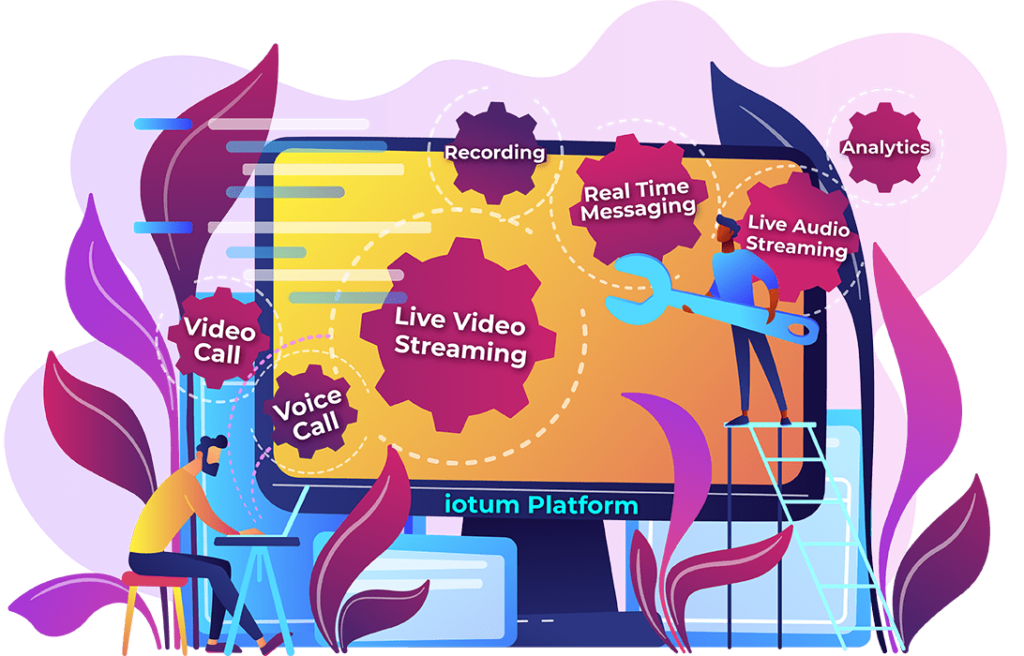 With 2020 off to a roaring start, it’s safe to say that by now, mid-year, your experience with video conferencing has ameliorated ten-fold. Your office has most likely converted to a more online, work-from-home approach, opening up the doors to online communication using video conferencing with clients, in team briefings, upper management conference calls, brainstorming sessions, status meetings… and the list goes on.
With 2020 off to a roaring start, it’s safe to say that by now, mid-year, your experience with video conferencing has ameliorated ten-fold. Your office has most likely converted to a more online, work-from-home approach, opening up the doors to online communication using video conferencing with clients, in team briefings, upper management conference calls, brainstorming sessions, status meetings… and the list goes on.
What’s more is that as we continue to adapt to the changing times everyone currently faces, the workforce is becoming divided in how they are to physically (or virtually!) show up to work. Do you have colleagues who are working from home full-time? Does management put in 2 days a week at the office and then work remotely? Are you going back and forth between clients who have to stay in the office 5 days a week?
When colleagues and team members have spread out across digital and physical landscapes, keeping everyone together can prove to be a difficult task although not an impossible one! Even though there are time constraints, language barriers, differences in the hierarchy, and general challenges with time management, everyone truly does want to make working together as effective and productive as possible.
Here’s how to effectively maintain a collaborative work environment if your team is split up at home, in the office, or in-field.
9 Ways To Manage Cross-Office Collaboration:
9. Avoid Email Clutter
Emails are key to communicating fast and effectively while ensuring there’s a “trail.” But when a small question balloons into a gigantic conversation that gets long and complicated, the actual effectiveness of the exchange becomes convoluted.
Moving over to a business communication tool that provides a channel where work, statuses, and updates are made visible and graphic, gives everyone on deck a more manageable view of what’s happening. A collaboration tool like Slack creates this kind of cohesion, as does video conferencing software that comes loaded with integration options. This way you can bring two platforms together for the ultimate collaborative performance.
8. Keep An Eye On Workloads
Seeing what everyone is working on via a project management tool helps to discern the status of the project and who is on it. That way whether you’re at home or traveling for work, you’re able to jump on and see what’s in the pipeline.
Take advantage of color-coding, and using rows and columns to organize files, locations, and time tracking. Conversely, having an online meeting using video conferencing to discuss the project in real-time offers colleagues the chance to open up about where they are and how they’re feeling in the thick of things. Fostering a routine of online meetings where status and updates are discussed will help to identify priority items, bottlenecks and reduce missed timelines.
(alt-tag: Stylish woman walking down the street holding a mobile phone while looking at it and thumbing through.)
7. Be Mindful Of Time Zones
 It’s not ideal to have to join a “red-eye” meeting or one just before bed, but when scheduling projects or syncs, time zones play a role in deciding when to have a cross-office gathering.
It’s not ideal to have to join a “red-eye” meeting or one just before bed, but when scheduling projects or syncs, time zones play a role in deciding when to have a cross-office gathering.
Having everyone’s schedule handy and available allows the host or organizer to have visibility of the best time to have an online meeting. Look for video conferencing software that comes with a time zone scheduler or be open to some invited participants having to record the meeting now to watch it later.
6. Check-In Regularly
When your team is spread out across office, home and field, it’s easy to lose some of the more typical behaviors acquired when you’re working in tandem and only a few feet from each other – like glancing over to ask a question or passing by each other in the hall or breakroom.
To ensure everyone is on the same page, adopt a habit of touching base frequently. Don’t hesitate to make a connection multiple times a week whether by email, sync, conference call, video conference or text chat!
5. Rely On Automation To Keep Track
Managing deadlines, statuses, and work progress aren’t as easy when you can’t do it in person. But when you can offload time-consuming repetitive work, you loosen up time to spend on more important tasks. Plus, removing the human element produces better, more accurate results. Let automation do the heavy lifting for you:
- Schedule invites and reminders for upcoming video conferences
- Integrate Google Calendar with your video conferencing software for a seamless schedule and notifications
- Share real-time information with Google Doc and get instant edits and changes sent to your email
- Project management and video tools that automate spreadsheets, customer info, recordings, transcriptions and more.
4. Use A Mobile App
In the event of an online meeting, a mobile app gives colleagues the fast and easy option of being able to jump in on a call from wherever they are – on the street, in the backyard, or in the lunchroom.
Starting a meeting on the go from the palm of your hand gives you high-quality meetings that are just as good as if they were on your desktop. You can still schedule meetings in advance or on the spot; you can access and sync up to your Calendar and Address Book; and of course, right where you are is where your meeting is. A mobile app gives you the freedom to conduct a meeting or call wherever there is an internet connection.
Plus, you still get access to your call history, transcripts and recordings, in a safe and secure meeting environment.
3. Create A “Standardized” Work Storage Hub
 Make all important files, links, documents, and media easily accessible and stored in one location. When it’s centralized in one place, getting to it doesn’t have to seem like such a task. When items are cataloged, organized, and available in real-time, everyone can have access to the latest files, most recent documented meetings, and important decisions.
Make all important files, links, documents, and media easily accessible and stored in one location. When it’s centralized in one place, getting to it doesn’t have to seem like such a task. When items are cataloged, organized, and available in real-time, everyone can have access to the latest files, most recent documented meetings, and important decisions.
Some other suggestions:
If you have offices in different locations, there might be more than one language spoken. Try to stay with the language that’s most widely spoken and if you do need to communicate in a different language, conduct the conversation in private via text chat or in a separate channel.
Avoid making duplicates of documents by labeling them correctly, obviously and making it clear that there’s a procedure for working on them. There’s nothing worse than wasting hours on a document that was already done, has a more recent version, or got lost.
Discern which mode of communication is best suited for your objective. If you require clarification on a detail or a yes or no question, send your colleague a message in text chat. If you have a concern about an upcoming time-off request, shoot an email. If there’s a problem with a colleague and it’s affecting your ability to perform and produce good work, schedule a one-on-one video conference.
2. Adopt A “Video-First” Approach
Especially in light of a pandemic that has affected the world, a video-centric approach that values face-to-face interactions works to keep colleagues feeling like they are working with a real person instead of the idea of one. Showing your face, sharing your voice, moving your body – this is all a part of creating a more realistic version of you in a virtual setting. A video conference works to create a normal office environment into a digital landscape.
Plus, why “tell” when you can “show?” Some presentations – especially ones that involve concepts, and abstract ideas or nitty-gritty navigation through a website design – land better with a demonstration using screen sharing. Colleagues literally get to be on the same page of your video conferencing session with a front row seat to your ideas.
1. Experiment And Get Feedback
Like most arrangements, there’s a bit of a transition and experimentation involved. Cross-office collaboration that works more like a well-oiled machine instead of a rusty one, needs to implement different strategies, modes of communication, and tools to see the best course of action that works for the team.
One of the most important factors that will determine the success of the team or output of the project is everyone’s willingness to trust each other. Are team members able to treat each other with respect? Are remote workers pulling their weight instead of just lounging? Do office workers take on too much, eager to impress and take the lead?
With a focus on planning, the use of team-building tools, and a little camaraderie here and there, even if your team is spread out, trying new things to bridge the gap doesn’t have to be daunting. It’s important to try new strategies and tools and see which ones bring in the best results for your team and objective.
Cross-office collaboration will always come with a set of conflicts and challenges. The outcomes of colleagues working in and out of the office, near and afar, and operating on different schedules like flex hours, part-time, or full-time all impact the output and flow of work. However, even in the world’s current state of affairs, this is an opportunity to adapt to a potentially more integrated work-life balance that moves and bends with the technology we use.
Let Callbridge’s unique suite of two-way video conferencing software create cohesion amongst teams. Its technology is designed to connect people, so your business can flourish regardless of how dispersed your workforce is.
Callbridge caters to mid-size businesses looking for sophisticated solutions that narrow the differences internally between colleagues and externally with clients, vendors, stakeholders, and other important moving parts of your growing business. Offering a wide range of collaborative features to drive forward engagement and productivity, Callbridge’s expert audio, video and web conferencing platform keeps you connected safely and securely wherever you are and wherever you’re going.
What makes Callbridge different?
Meeting transcriptions through AI – Your artificially intelligent personal assistant Cue™ takes care of recording your meetings and identifying speakers, topics, and themes.
Integrations with Slack and Google Calendar – Never miss a beat when you can integrate alongside Google Suite, Outlook and Slack.
Exceptional Features – Enjoy world-class features like Meeting Recording, Screen Sharing, Document Sharing, Online Whiteboard, and more!
High-tier Security – Feel confident your information is safe and secure with One-Time Access Code, Meeting Lock, and Security Code.
Custom Branding – Make your online meeting room branded and uniquely yours using your own logo and brand standards.
No Downloads Required – There are no cords and heavy equipment, just zero download, browser-based video conferencing solutions.


